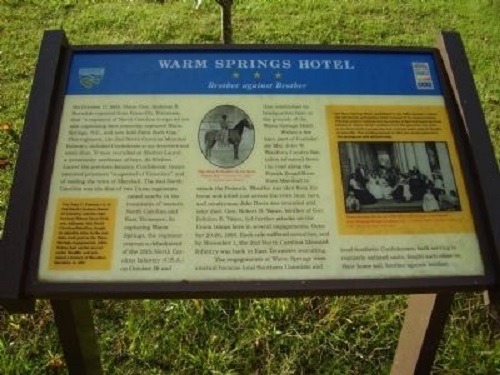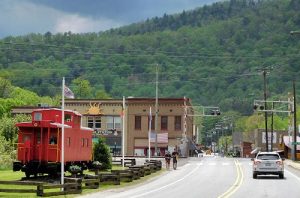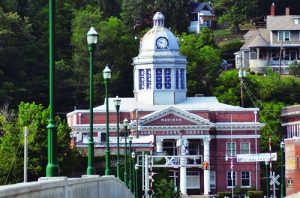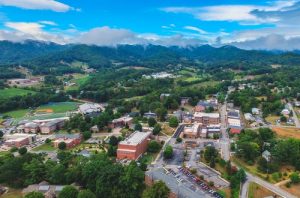TRAIL MARKER IN HOT SPRINGS NC: WARM SPRINGS HOTEL, BROTHER AGAINST BROTHER

Location:
GPS: 35° 53.759′ N, 82° 49.513′ W. The marker is on River Road, on the right when traveling north on US Highway 25 just over the French Broad River when entering the town of Hot Springs.
The Event:
A Union regiment made up largely of Confederate deserters and Union-supporting area citizens captured and briefly held Warm Springs Hotel in the fall of 1863. The hotel was Union headquarters until the Northerners were expelled in late October. The engagements at Warm Springs were unusual because local Southern Unionists and local Southern Confederates, both serving in regularly enlisted units, fought each other on their home soil, brother against brother.
Inscription:
On October 17, 1863, Union Gen. Ambrose E. Burnside reported from Knoxville, Tennessee, that “a regiment of North Carolina troops we are now organizing here yesterday captured Warm Springs, N.C., and now hold Paint Rock Gap.” This regiment, the 2nd North Carolina Mounted Infantry, included Confederate army deserters and more than 70 men recruited at Shelton Laurel, a community northeast of here. At Shelton Laurel the previous January, Confederate troops executed prisoners “suspected of Unionism” and of raiding the town of Marshall. (See the Marker for the town of Marshall below) The 2nd North Carolina was the first of two Union regiments raised nearby in the mountains of Western North Carolina and East Tennessee. In capturing Warm Springs, the regiment overran a detachment of the 25th North Carolina Infantry (C.S.A.) on October 16 and then established its headquarters here on the grounds of the Warm Springs Hotel.
Within a few days, part of Confederate Maj. John W. Woodfin’s Cavalry Battalion advanced down the road along the French Broad River from Marshall to attack the Federals. Woodfin was shot from his horse and killed just across the river from here, and cavalryman Jake Davis was wounded and later died. Gen. Robert B. Vance, brother of Gov. Zebulon B. Vance, led further attacks on the Union troops here in several engagements, October 20-26, 1863. Each side suffered casualties, and by November 1, the 2nd North Carolina Mounted Infantry was back in East Tennessee recruiting.
Historical Notes:
The natural mineral springs were first discovered by the Native Americans and eventually became a tourist draw in the early 1800s with the Warm Springs Hotel. When it burned later in the century, it was replaced by the Mountain Park Hotel (which also burned in the mid 1900s). The Mountain Park Hotel established the first organized golf club in the southeast with a nine-hole course. The Hot Springs Resort and Spa now operates on the grounds and continues to be a tourist draw for those wishing to experience the reputedly healing waters.



